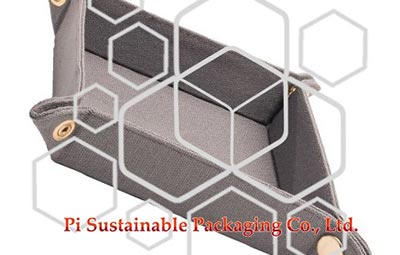Which types of packaging are the most environmentally friendly?
May 08,2024 | Views: 1051
Environmentally friendly packaging prioritizes sustainability by minimizing waste, reducing energy consumption, and utilizing materials that are renewable and biodegradable. Here are some types of packaging that are considered environmentally friendly:
1. Biodegradable Packaging: These materials break down naturally in the environment without causing harm. Examples include packaging made from cornstarch, sugarcane, or bioplastics derived from renewable sources.
2. Recycled Content Packaging: Packaging made from recycled materials reduces the demand for virgin resources and decreases waste. Look for packaging made from recycled paper, cardboard, or plastic.
5. Reusable Packaging: Containers that can be reused multiple times are more environmentally friendly than single-use packaging. Examples include glass jars, metal tins, and durable plastic containers.
6. Plant-based Packaging: Packaging made from renewable plant-based materials such as bamboo, palm leaves, or bagasse (sugarcane waste) offers an eco-friendly alternative to traditional packaging materials.
7. Water-Soluble Packaging: Some innovative packaging materials dissolve in water, reducing waste and eliminating the need for disposal. These materials are often used for single-use items like detergent pods or food packaging.
8. Paper-based Packaging: Paper is renewable, biodegradable, and recyclable, making it a popular choice for environmentally friendly packaging. Look for packaging made from sustainably sourced paper or cardboard.
9. Edible Packaging: Packaging materials that are safe for consumption, such as edible films made from seaweed or starches, offer a unique and environmentally friendly alternative to traditional packaging.
Choosing packaging that incorporates one or more of these characteristics can help reduce environmental impact and promote sustainability. However, it's essential to consider the entire lifecycle of the packaging, including production, transportation, and disposal, to make informed decisions about its environmental footprint.
Prev: How do I design my own packaging?
Next: How to make cosmetic packaging sustainable?
1. Biodegradable Packaging: These materials break down naturally in the environment without causing harm. Examples include packaging made from cornstarch, sugarcane, or bioplastics derived from renewable sources.
2. Recycled Content Packaging: Packaging made from recycled materials reduces the demand for virgin resources and decreases waste. Look for packaging made from recycled paper, cardboard, or plastic.
3. Compostable Packaging: Similar to biodegradable packaging, compostable packaging breaks down into organic matter under specific conditions, often in industrial composting facilities. It can include materials like compostable plastics and paper.
5. Reusable Packaging: Containers that can be reused multiple times are more environmentally friendly than single-use packaging. Examples include glass jars, metal tins, and durable plastic containers.
6. Plant-based Packaging: Packaging made from renewable plant-based materials such as bamboo, palm leaves, or bagasse (sugarcane waste) offers an eco-friendly alternative to traditional packaging materials.
7. Water-Soluble Packaging: Some innovative packaging materials dissolve in water, reducing waste and eliminating the need for disposal. These materials are often used for single-use items like detergent pods or food packaging.
8. Paper-based Packaging: Paper is renewable, biodegradable, and recyclable, making it a popular choice for environmentally friendly packaging. Look for packaging made from sustainably sourced paper or cardboard.
9. Edible Packaging: Packaging materials that are safe for consumption, such as edible films made from seaweed or starches, offer a unique and environmentally friendly alternative to traditional packaging.
Choosing packaging that incorporates one or more of these characteristics can help reduce environmental impact and promote sustainability. However, it's essential to consider the entire lifecycle of the packaging, including production, transportation, and disposal, to make informed decisions about its environmental footprint.

 English
English 日本語
日本語 Français
Français Deutsch
Deutsch Español
Español
